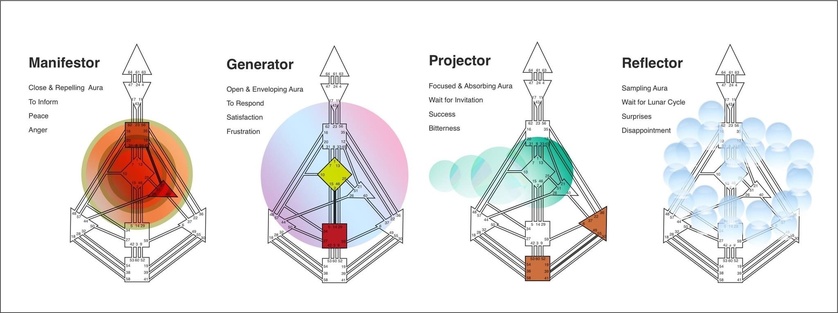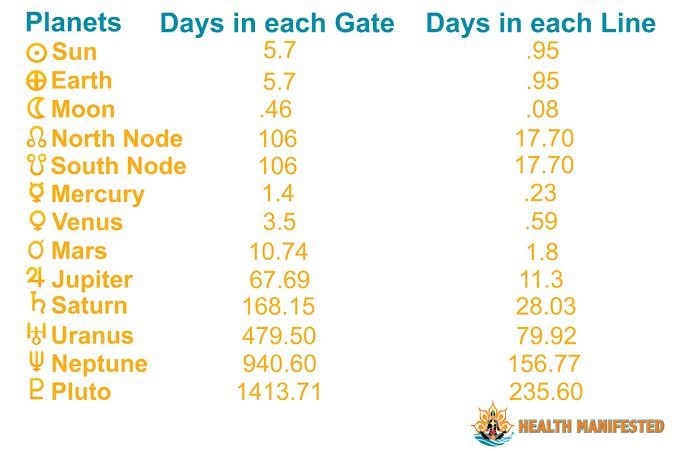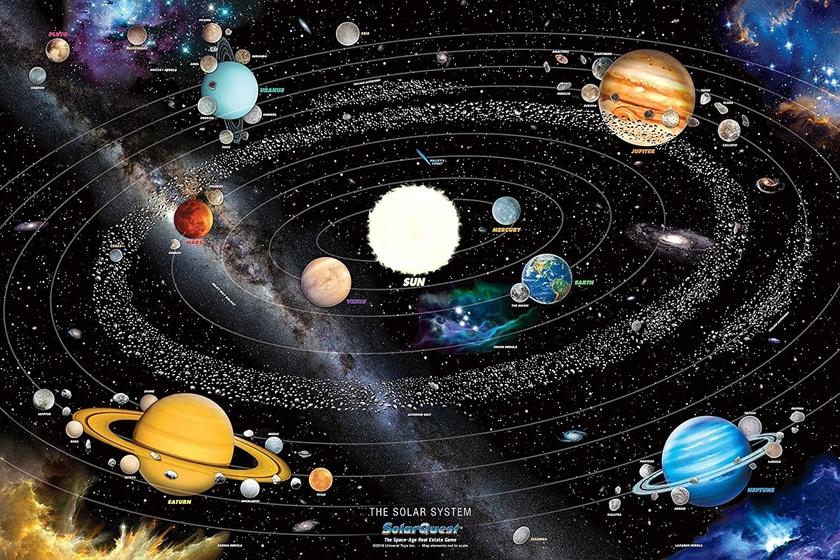Ra’s Backstory of the 4 Types
Koen’s Ra Quote of the Day
[it’s a bit rambly]
"When I was given the knowledge I was not given Type names—Generator, Manifestor—I was simply told that there were four different configurations and there were four different kinds of vehicles.
Basically, General Motors, Mercedes, Ford, I don‘t know, four different companies making certain kinds of vehicles, and without sounding flip it's really, in a sense, the easiest way to grasp what Type leads to.
That is, we've already seen that there's no such thing as "Type" until we see the nature of the definition, that the definition or lack of it in the case of the Reflector, and we‘ll look at that, that the definition establishes what is the consistent imprint.
And it‘s out of this consistent imprint that we get a holistic configuration, what we see in this BodyGraph. A BodyGraph rooted in a circuitry matrix and we get to see a certain configuration in that circuitry matrix.
What you to get to notice and it was an interesting process for me because it wasn't just simply that it was new knowledge, it had never been taught.
At the same time that I was trying to digest on the surface what I had been given, I was also at the same time in the process of trying to attract other people to the knowledge.
When I first began teaching the knowledge I just dealt with the basics of definition and what definition led to. And when I began training people I trained them in, and those trainings were quite limited, I trained them in as much detail as I was comfortable giving them.
In those early years it was clear to me that nobody recognized that there was a grouping of the graphics, and again not anybody's fault, after all this was new knowledge and very limited in what I was actually able to share in those early years.
So I began what I consider to be the second step in developing the transferability of Human Design. That is, to be able to point out very clearly these four different vehicles and to begin to show a generic way in which they all operate.
This is the basis of Type, that is, the fact that there is a division of four is without question.
And when I say that it is without question-in the late 1990s Human Design and its calculation system was placed through a whole statistical research process.
And basically that research was focused on the legitimacy of the differentiations of Type. In other words, basically what was done was a statistician was given Type data based on samples that were rooted in 5000 calculations each, four of those 5000 calculations—when I say 5000 we didn't use actual birth data, we invented it, if you know what I mean. In other words, for statistical purposes so that we took 5000 dates spread out over one decade and then took 5000 dates spread out over another decade. We covered four decades.
All that information was crunched. In other words, the Type that was a by-product of all those particular dates was crunched into the whole statistical program. The results of that, and they were published many, many years ago, that not only was there a clearer distinction between Types, but that the possibility that that was a construct, in other words, the possibility that I, for example, had made it up and said that these are the four different divisions, I remember being quite impressed by the fact that the odds were 60 billion—60 million, million—to one against the possibility that anybody could figure that one out.
So, it was interesting to see that that was one of the early scientific confirmations that I received. The most astounding obviously was the discovery that indeed the neutrino had mass. But for me the statistical evidence to substantiate Type was something that was very important. It said that it was a genetic construct and only as a genetic construct could it have held up.
The other thing that was very interesting about it statistically was that if you're presenting, for example, what you think is—you‘re a pharmaceutical company and you're presenting a new drug on the market that you think is going to heal or help with some kind of disease.
There are huge amounts of tests that need to be done, that is, before the drug can be released on the market. All of those tests are subjected to statistical analysis. And the statistical analysis is how stable the evidence is of the validity of the medicine. And there is a quotient that's required for that in order for that drug, whatever it is, to be released. And that quotient, I don't remember how the numbers work, but anyway, it was a set figure. The veracity of the differentiation between Types had a quotient that was over 300 times higher than what was required statistically to verify the validity of a particular drug.
So, one of the things that we‘re dealing with and we've all learned that, at least those of us who are professionals who have worked with Design for a very long time, Type is something that has no question marks attached to it. So, what are we really looking at then? And of course, this is the real point of all this."
~Ra Uru Hu



















